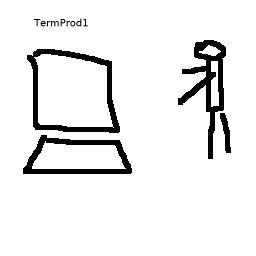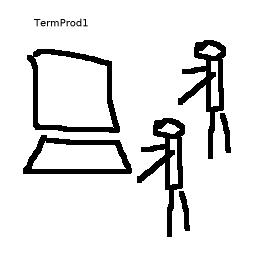
www.noxqs.org
forum - work - Frog - documentation - download
 www.noxqs.org |
Networking Office Xtended Query System forum - work - Frog - documentation - download |
|
Documentation noxqs : a sample data set and use This story is in evolution, and adjusted while programming the application. Company (somename: ProTest) - has 10-50 employees - production of (something: mainboards? pc cases?). In the production process we distinguish following steps:
Of course there is need for planning, sales etc: office work, all kinds of support. There is packing, shipping, etc ... Most parts of the building are specific for the activity. Let's take a look at the building:
Costs: We distinguish 2 possibilities for the costs: 1. Costs depending direct on the order: Direct Costs (that can be measured during the production of the order) 2. All the other costs: Indirect Costs (cf "general costs"). (cannot be measured - yearly totaled) The direct costs have certainly to be evaluated on ("payed for by") the order that caused them. The indirect costs have to be payed by - and thus spread over - our productive activity on the orders. So we have to measure our productive "units", whatever that is: working hours or pieces produced. We have to estimate how much of "them" we will have the coming calculation period (year). The direct costs are interesting to follow very closely; they make the difference in cost between two orders. There are 3 major Direct Costs: - working time of the labour done on an order: Direct Labour Cost: (DLC) - material used to produce an order: Direct Material Cost: (DMC) - any other bare cost caused by an order: an invoice for external work, etc: Direct Bare Cost: (DBC). In the end we make an evaluation of the order by looking at the two costs, the total cost, the salling price, result, etc. If we make a distinction between different costplaces in the production, a follow op may be done more in detail. Because there is not always a sales price, we do the calculation of the result only in the end of the order evaluation. Let's decide what we want to follow up:
Other choices are possible of course: the more costplaces you make, the more complex it will be to run the system.  To be able to calculate all these interesting numbers, we have to register a lot of things. To be able to calculate all these interesting numbers, we have to register a lot of things.Some of it: working hours, material, all kinds of costs and where they belong to. Registration: We have terminals in all the places, with a terminal login, which is used by the first user who enters to log in the machine: terminal in the office is logged in with : "termoff" terminal in the design dpt is logged in with "termdes" terminal in the moulding dpt is logged in with "termmould" terminal in the blending dpt is logged in with "termblend" terminal in the production is logged in with : "termprod1"  In these cases, the 'users' (seen from the system) are terminal logins - we let them start with term to make it easyer to distinct them from real people, who might have a personal login. In these cases, the 'users' (seen from the system) are terminal logins - we let them start with term to make it easyer to distinct them from real people, who might have a personal login.Design and Office have their personal pc's, so they get a terminal login per employee, here the same as their employee name, also just to make it easy. The login on the terminal defines a number of preset values, stored in the system. It are a kind of preferences for that terminal, like the employee list, the kind of jobs that can be selected, material list, etc. As more terminals are available, more personal logins are possible. Preselection of the (smaller number of) choices makes the use easier. The input on the terminal consists of employee selection, job number, material used and comments. |